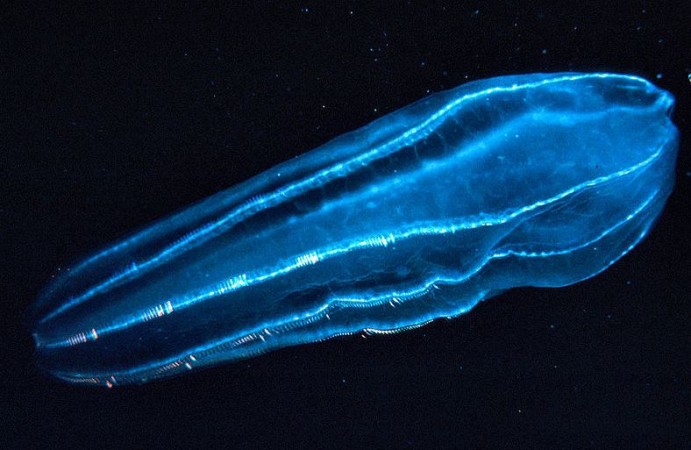
Bioluminescent organisms have captivated human imagination for centuries. From the mesmerizing glow of fireflies on a summer night to the ethereal illumination of certain marine life deep beneath the ocean's surface, these organisms possess a remarkable ability to produce light through chemical reactions within their bodies. In this article, we will delve into the fascinating world of bioluminescence, exploring its mechanisms, ecological significance, and potential applications in various fields.
1. Introduction: Unveiling Nature's Light Show
Imagine walking through a dimly lit forest, and suddenly, the darkness is pierced by tiny specks of light dancing around you. This enchanting spectacle is the result of bioluminescence—a natural phenomenon that allows certain organisms to emit light. Bioluminescence is not only visually stunning but also serves various purposes in the natural world.
2. The Science Behind Bioluminescence
How Does Bioluminescence Work?
Bioluminescence is a chemical process that involves the conversion of chemical energy into light energy. It occurs when a specific molecule called luciferin reacts with an enzyme called luciferase in the presence of oxygen. This reaction produces light without generating heat, making it highly efficient.
The Key Players: Luciferin and Luciferase
Luciferin is the light-emitting molecule found in bioluminescent organisms. It is typically a small molecule that, when oxidized by luciferase, releases energy in the form of light. The luciferase enzyme acts as a catalyst, facilitating the reaction between luciferin and oxygen.
3. Diversity in Bioluminescent Organisms
Bioluminescence is found in a wide range of organisms across different taxonomic groups. Let's explore some of the most fascinating examples:
Fireflies: Masters of the Night
Fireflies are perhaps the most well-known bioluminescent organisms. These enchanting insects use their light-producing abilities to attract mates. Through a series of precisely timed flashes, fireflies communicate with each other, creating a magical symphony of light in the darkness.
Jellyfish: Illuminating the Depths
In the depths of the ocean, certain species of jellyfish emit a captivating bioluminescent glow. This serves as a defense mechanism, deterring potential predators by confusing and disorienting them. The bioluminescent display also helps jellyfish attract prey in the vast darkness of the deep sea.
Marine Bacteria: Lighting Up the Ocean
Bioluminescent bacteria illuminate the ocean at night, creating an awe-inspiring spectacle known as "milky seas." These vast expanses of glowing water occur due to the presence of immense colonies of bioluminescent bacteria. The exact purpose of this phenomenon is still being studied, but it is believed to be linked to the regulation of bacterial populations.
Fungi: Nature's Glow-in-the-Dark
While not as commonly associated with bioluminescence as other organisms, certain species of fungi possess the ability to emit light. These luminous fungi create an otherworldly glow in the forest, contributing to the magical ambiance of the night.
4. Evolutionary Advantages of Bioluminescence
Bioluminescence has evolved independently multiple times throughout evolutionary history. This phenomenon provides organisms with several advantages that contribute to their survival and success:
Attraction and Reproduction
Bioluminescent displays often play a crucial role in attracting mates. By producing intricate light patterns or specific signals, organisms can communicate their availability and suitability as a partner.
Defense and Predation
For many bioluminescent organisms, light serves as a defense mechanism. By producing sudden bursts of light or continuously glowing, they startle or confuse predators, increasing their chances of survival. On the other hand, some predators use bioluminescence to their advantage, attracting unsuspecting prey with their glowing lures.
Communication and Camouflage
In certain species, bioluminescence is utilized for communication within social groups. It helps coordinate collective movements, synchronize activities, and maintain group cohesion. Additionally, some organisms use bioluminescence to blend in with their surroundings, effectively camouflaging themselves from predators or prey.
5. Bioluminescence and Human Interaction
The unique properties of bioluminescence have caught the attention of scientists and researchers, leading to its exploration in various fields:
Bioluminescence as a Tool for Research
Bioluminescent organisms have become valuable tools in scientific research. By genetically modifying organisms to express bioluminescent traits, researchers can study biological processes, disease mechanisms, and drug effects in real-time.
Bioluminescent Bioassays: Unveiling the Invisible
In the field of biotechnology, bioluminescent bioassays are used to detect and measure biological substances. These assays rely on the ability of bioluminescent molecules to emit light when they come into contact with specific target molecules, enabling researchers to detect even trace amounts of substances with high sensitivity.
Bioluminescent Imaging: Illuminating the Inner Workings
Bioluminescent imaging techniques allow scientists to visualize and track biological processes within living organisms. By introducing bioluminescent genes into specific cells or tissues, researchers can monitor cellular activities, disease progression, and the effectiveness of therapeutic interventions.
6. Potential Applications of Bioluminescence
The extraordinary properties of bioluminescence hold immense potential for practical applications in various fields:
Medical and Pharmaceutical Advancements
Bioluminescent techniques offer new avenues for medical diagnostics and therapeutics. From non-invasive imaging of tumors and infectious agents to monitoring drug delivery and treatment responses, bioluminescence-based technologies hold promise for advancing healthcare and personalized medicine.
Environmental Monitoring and Conservation
Bioluminescent organisms can serve as indicators of environmental health and pollution levels. Monitoring their populations and patterns of bioluminescence can provide valuable insights into the state of ecosystems and aid in conservation efforts.
Biotechnology and Bioengineering
The unique properties of bioluminescent molecules have inspired innovations in biotechnology and bioengineering. By harnessing the natural light-producing abilities of organisms, researchers can develop more efficient sensors, renewable energy sources, and novel biomaterials.
7. Conclusion: The Enigmatic Beauty of Nature's Light
Bioluminescent organisms have captivated human curiosity for centuries. From their mesmerizing displays of light to their diverse ecological roles, these organisms offer a glimpse into the wonders of nature's creativity. The study of bioluminescence continues to unlock new scientific discoveries and inspire groundbreaking applications, proving that even in the darkest corners of the Earth, nature finds a way to illuminate our world.
India's Space Program Soars, ISRO Inspires Scientific Advancement